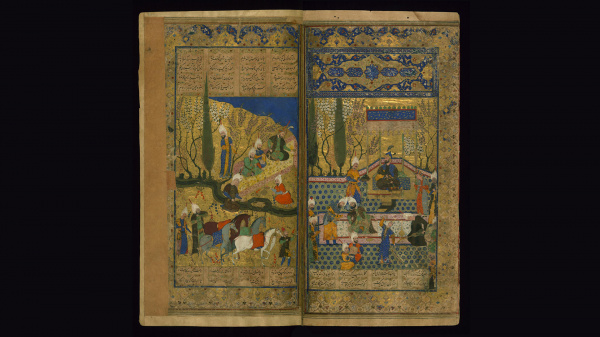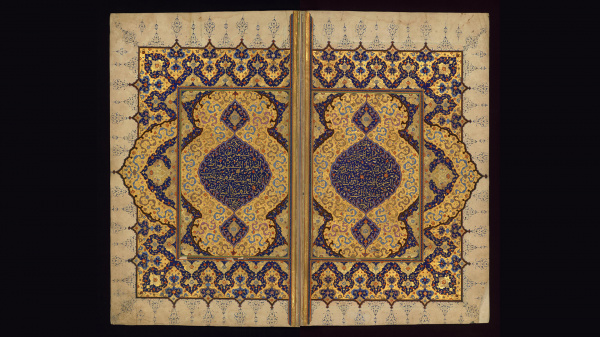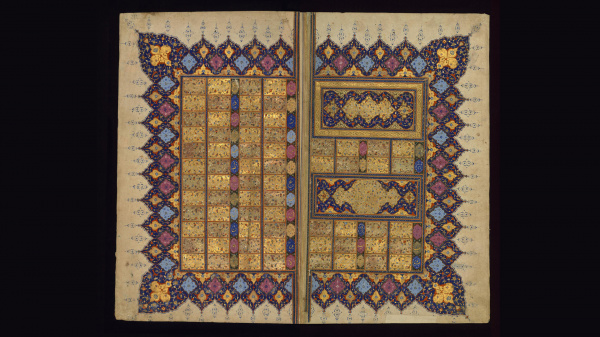Islamic illuminated manuscripts are a unique art form that has become famous in many Muslim countries, including Iran. These manuscripts combine texts, illustrations and decorative elements, resulting in magnificent pieces of art that are not only visually appealing, but also have deep religious and cultural significance. This article explores Islamic illuminated manuscripts of Iran, their history, style and symbolic meaning.
History and development
Islamic illuminated manuscripts of Iran have an ancient and rich history. Their development began with the introduction of Islam to the region in the VII century. Iranian artists and artisans were actively involved in the creation of these manuscripts, using various techniques and styles. Manuscripts were richly illustrated and decorated with gold, silver and bright colors, which added to them brilliance and magnetism.
Style and techniques
Islamic illuminated manuscripts of Iran are distinguished by their unique styles and techniques. One of the most famous styles is Shahnameh, an epic poem by Firdausi, an illustrated manuscript that tells the history of Persia. These manuscripts have abundant detailed and realistic depictions reflecting historical and mythological events.
Another famous style is rubaiyat, which contains quatrains illustrated with scenes from life and nature. They made extensive use of geometric patterns and abstract shapes.
Symbolic meaning
Islamic illuminated manuscripts of Iran have a deep symbolic meaning, which is related to the religious and cultural aspects of Islam. These manuscripts served not only as a means of conveying knowledge and religious texts, but also as an expression of faith and spirituality.
Illuminated manuscripts often include depictions of allegorical creatures, plants, architectural elements and geometric patterns. Each of these elements has its own symbolism. For instance, depictions of flowers and plants symbolize the beauty of nature and vital energy, while geometric patterns represent harmony, order and spiritual unity.
Gold and silver details used to decorate manuscripts symbolize the divine luminous presence of art. They also stress the importance of knowledge, enlightenment and spiritual well-being.
Islamic illuminated manuscripts of Iran had an enormous influence on the development of art and culture not only in the region, but also in the entire Islamic world. Their sophistication, technical skill and symbolic meaning make them unique pieces of art, which attracts attention and admiration of art historians and art connoisseurs around the world.
Illuminated Tazhib manuscripts
Illuminated manuscripts, also known as Tazhib, are an important part of Islamic illuminated manuscripts of Iran. The term ‘tazhib’ means ‘decoration’ or ‘decoration in gold’ in Persian. These manuscripts are elaborately decorated pages based on Islamic religious texts, including the holy Quran, prayer books and other religious works.
Tazhib is a painting and decoration technique that uses gold and bright colors to create patterns, leaves, flowers and geometric patterns on manuscript pages. Gold details and gold leaves are used with great skill and attention to details in order to create an effect of sparkle and light.
Tazhib patterns often reflect natural elements, such as flowers, leaves, branches and birds. They also include geometric patterns, which symbolize harmony and order in the world. These patterns create magnificent and intricate compositions that give manuscripts an exquisite look and symbolic meaning.
Tazhib technique was developed and perfected by Iranian artists and manuscript masters over many centuries. Iran is famous for its magnificent illuminated manuscripts, and the contribution of Tazhib to Iranian Islamic art is significant.
Tazhib Illuminated manuscripts have become not only symbols of religiosity and spirituality, but also valuable sources of knowledge and cultural heritage. They bear witness to the skill and creativity of Iranian artists and convey the richness and beauty of Islamic culture.
Examples of famous illuminated manuscripts of Iran
Firdausi’s “Shahnameh” (“The Book of Kings”), an illustrated version of epic poem by Firdausi decorated with Tazhib technique, is one of the outstanding examples of Islamic illuminated manuscripts in Iran. This manuscript contains historical and mythological events that describe the history of Persia from ancient times to the Middle Ages. Tazhib illuminated pages along with colorful and detailed illustration emphasize the magnificence and epic nature of the work.

Another example of illuminated manuscript with Tazhib is the Quran. In Islamic culture, the Quran is the holiest text, and Tazhib illuminated manuscripts of the Quran have a special spiritual and aesthetic value. Exquisite patters and decorative elements created with gold and bright colors give these manuscripts a majestic and sacred quality.


Another remarkable example of Tazhib illuminated manuscripts are prayer books, known as Dua-Kitab. These manuscripts contain a collection of prayers and religious texts and were created with special attention to decoration and ornamentation. Golden patterns, floral motifs and intricate compositions make these prayer books not only a means of confessing the faith, but also works of art.
Tazhib illuminated manuscripts represent the richness and diversity of Islamic art and culture in Iran. They are a testimony to the high level of skill and creativity of Iranian artists, who have passed on their skills from generation to generation.
Iran is one of the most famous and recognized centres of Islamic art and culture, and Iranian craftsmen and artists continue to preserve and pass on the art of Tazhib from generation to generation. They learn from experienced masters, study traditions and techniques and bring their own innovations and creative ideas in order to continue developing this unique art.
Contemporary Iranians artists and Tazhib masters also use techniques and elements of contemporary art to give their works a modern twist and appeal to a new generation of art lovers. They experiment with different color schemes, styles and material combinations to create unique and modern illuminated manuscripts.
For instance, Mohammed Reza Shadeli, a renowned contemporary Tazhib master, has improved and diversified the Tazhib technique, brought a fresh perspective and new ideas to this art. Shadeli demonstrates his mastery in creating unique patterns and decorations, making his works recognizable and valuable in the world of Islamic art.
Tazhib illuminated manuscripts are a testimony to the fine taste and creative craftsmanship of Iranian artists. These manuscripts are not only colorful and visually appealing, but also convey a deep spiritual significance and symbolic meaning of Islamic culture. They continue to attract the attention of art historians, collectors and connoisseurs of Islamic art around the world and are valuable sources for studying and understanding Islamic culture, history and religious texts. Thanks to the skill and creativity of Iranian artists, Tazhib continues to flourish and become renowned in Iranian art and culture.
Famous works of art with Tazhib can be seen in several museums around the world that specialize in Islamic art and culture.
The Museum of Islamic Art and Culture in Doha, Qatar, is one of the most famous museums of Islamic art in the world. It offers a wide range of collections, including illuminated manuscripts with Tazhib from various epochs and regions.
The British Museum in London, Great Britain, has a significant collection of Islamic art, including manuscripts with Tazhib. Here one can see some of the rarest and most beautiful illuminated manuscripts from different parts of Iran.
The Museum of Islamic Art in Doha, Kuwait, is one of the leading museums of Islamic art in the Middle East. It displays an extensive collection of manuscripts with Tazhib, demonstrating craftsmanship and diversity of this art.
The Museum of Islamic Art in Cairo, Egypt, has a rich collection of Islamic art, including illuminated manuscripts with Tazhib. Here one can enjoy beautiful works and explore different styles and techniques of this art.
Tazhib illuminated manuscripts can be presented in other leading art museums around the world that have collections of Islamic art, such as the Metropolitan Museum in New York, the USA, the Victoria and Albert Museum in London, Great Britain, the Museum of Art in Cincinnati, the USA, and others.
GSV "Russia - Islamic world"
Photo: Walters Art Museum
